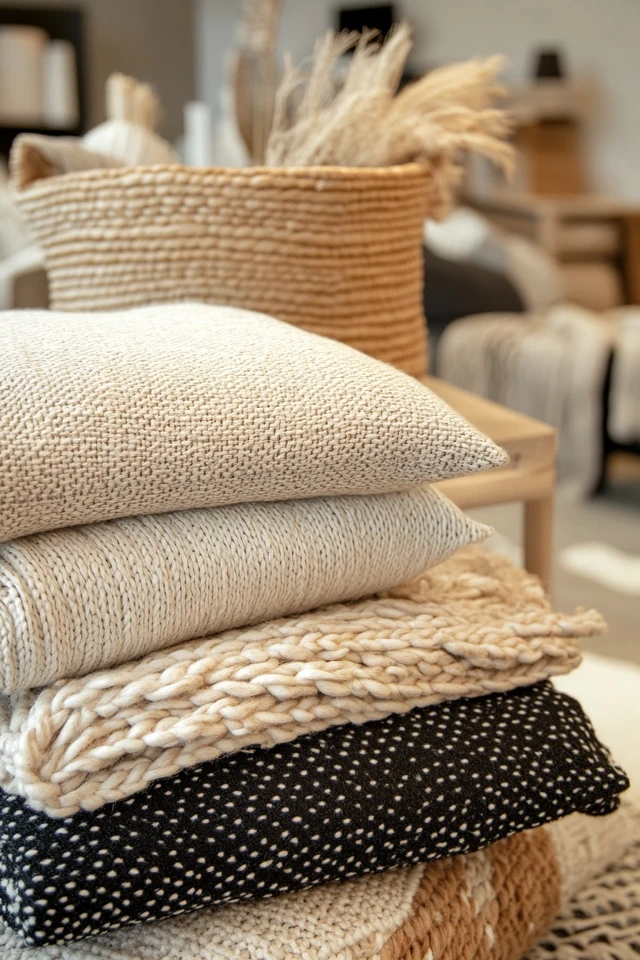Scandinavian design is renowned for its simplicity, functionality, and timeless elegance. While it often embraces a minimalist aesthetic, texture is a crucial element that elevates a Scandinavian living room from stark to warm and inviting. Incorporating different textures not only enhances visual interest but also adds depth and coziness to a space.
I remember the first time I experimented with layering textures in my own living room. I was determined to keep the space minimalist, but it felt too bare—almost clinical. Then I added a chunky knit throw on the sofa, a natural jute rug on the floor, and a woven basket in the corner. Suddenly, the room came alive, exuding warmth and personality without losing its clean, Scandinavian vibe.
In this guide, we’ll explore how to use texture to create a cozy, textured Scandinavian living room that’s stylish yet incredibly inviting.
Why Texture is Essential in Scandinavian Design
- Creates Warmth: Soft and natural textures offset the minimalist, clean lines of Scandinavian interiors.
- Adds Depth: Layering different materials and finishes prevents the space from feeling flat.
- Enhances Comfort: Tactile elements like cushions, rugs, and throws make the room feel inviting.
- Maintains Minimalism: Texture allows for visual interest without cluttering the space with too many objects or patterns.
1. Layer Rugs for Visual and Physical Warmth
Why It Works:
Scandinavian living rooms often feature hardwood or tile floors. Adding rugs creates warmth and comfort while introducing texture.
How to Implement:
- Start with a large area rug made from natural materials like wool, jute, or sisal.
- Layer a smaller, softer rug, like a sheepskin or a patterned kilim, on top for added depth.
- Choose neutral tones like beige, cream, or gray to maintain the Scandinavian color palette.
Pro Tip: Play with textures rather than colors—mix a flatwoven rug with a fluffy or chunky one for contrast.
2. Use Soft, Cozy Throws and Blankets
Why It Works:
Throws are an easy way to add texture and coziness, perfectly embodying the Scandinavian concept of hygge.
How to Implement:
- Drape a chunky knit or woven throw over your sofa or armchair.
- Opt for materials like wool, cashmere, or cotton to add softness.
- Stick to neutral shades or subtle patterns to complement the room’s palette.
Pro Tip: Fold throws neatly for a clean look, or drape them casually for a lived-in vibe.
3. Incorporate a Mix of Pillows
Why It Works:
Decorative pillows are the perfect way to introduce both texture and comfort into your living room.
How to Implement:
- Choose pillows with a mix of textures—think linen, velvet, knitted wool, or faux fur.
- Stick to a neutral palette but vary the textures to create interest.
- Mix shapes and sizes, such as square, rectangular, and round cushions.
Pro Tip: Avoid overcrowding the sofa—use just enough pillows to balance aesthetics and functionality.
4. Opt for Natural Materials in Furniture
Why It Works:
Scandinavian design celebrates natural materials, which add texture while maintaining simplicity.
How to Implement:
- Choose a light wood coffee table or side table to add warmth.
- Incorporate woven elements, like a rattan armchair or wicker baskets, for an earthy touch.
- Add leather or faux leather accents, such as a pouf or ottoman, for a tactile contrast.
Pro Tip: Keep the finishes matte or semi-matte to align with the understated Scandinavian aesthetic.
5. Add Greenery for Organic Texture
Why It Works:
Plants bring life and a subtle layer of texture to a Scandinavian living room while maintaining a connection to nature.
How to Implement:
- Use simple planters in neutral tones, wood, or ceramic finishes.
- Choose plants with interesting shapes and textures, like monstera, ferns, or fiddle leaf figs.
- Arrange plants at different heights using shelves, stands, or hanging planters.
Pro Tip: Stick to low-maintenance plants to keep the minimalist vibe intact and your stress level low.
6. Play with Wall Textures
Why It Works:
Walls are often overlooked but can be an excellent source of texture in a Scandinavian living room.
How to Implement:
- Use wood paneling or shiplap for a subtle, Nordic-inspired look.
- Hang a woven wall tapestry or macramé art for a soft, textural element.
- Add open shelving to display books, ceramics, or decorative items with interesting textures.
Pro Tip: Keep the walls light and neutral to avoid overpowering the space.
7. Incorporate Scandinavian Lighting with Textural Elements
Why It Works:
Lighting in Scandinavian design isn’t just functional—it’s a way to add atmosphere and subtle texture.
How to Implement:
- Choose pendant lights with natural finishes like bamboo, paper, or fabric shades.
- Add a floor lamp or table lamp with a textured ceramic or wood base.
- Use string lights or candles for a soft, cozy glow.
Pro Tip: Layer different types of lighting to create depth and ambiance in the room.
8. Use Storage as Decor
Why It Works:
Scandinavian design often blurs the line between function and aesthetics, making storage an opportunity for texture.
How to Implement:
- Use woven baskets to store blankets, magazines, or toys.
- Add a wooden ladder as a decor piece to hang throws or display books.
- Incorporate open shelving with woven or textured storage bins.
Pro Tip: Keep storage minimal and intentional to maintain a clutter-free look.
9. Mix Hard and Soft Textures
Why It Works:
Scandinavian interiors balance hard materials like wood and metal with soft elements to create a harmonious look.
How to Implement:
- Pair a sleek wooden coffee table with a soft sheepskin rug underneath.
- Use metal accent pieces, like a black-framed mirror or candle holders, alongside woven or fabric decor.
- Incorporate stone or ceramic pieces for an earthy contrast to textiles.
Pro Tip: Focus on blending textures rather than introducing too many colors or patterns.
10. Layer Neutral Shades
Why It Works:
Layering shades of white, gray, and beige adds subtle texture without deviating from the minimalist palette.
How to Implement:
- Use a mix of light and dark neutrals in textiles, furniture, and decor.
- Add visual interest with tonal variations of the same color.
- Keep the overall look soft and cohesive by avoiding sharp contrasts.
Pro Tip: Experiment with warm and cool neutrals to find the balance that works best for your space.
Picture Gallery
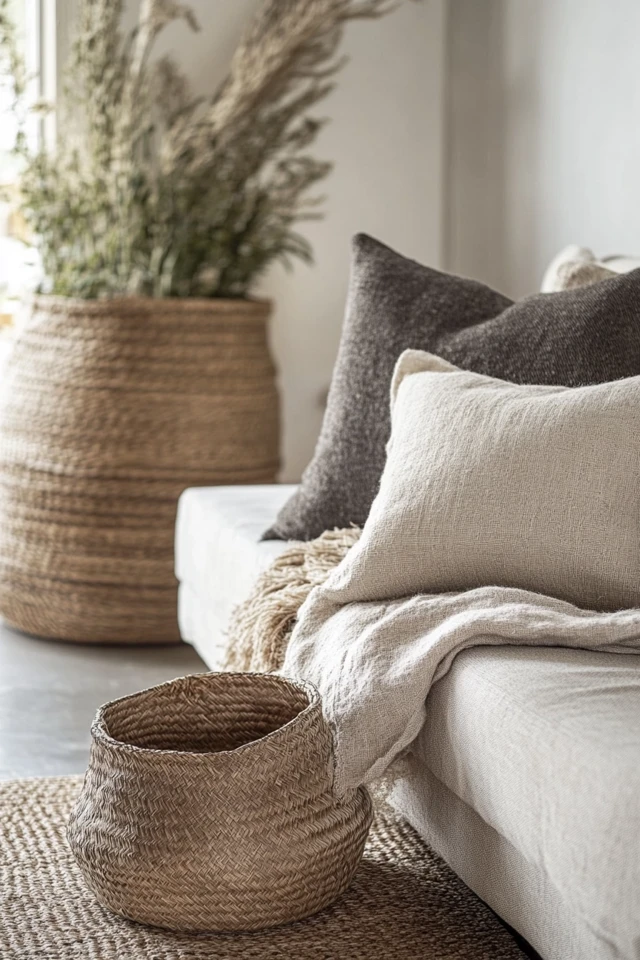
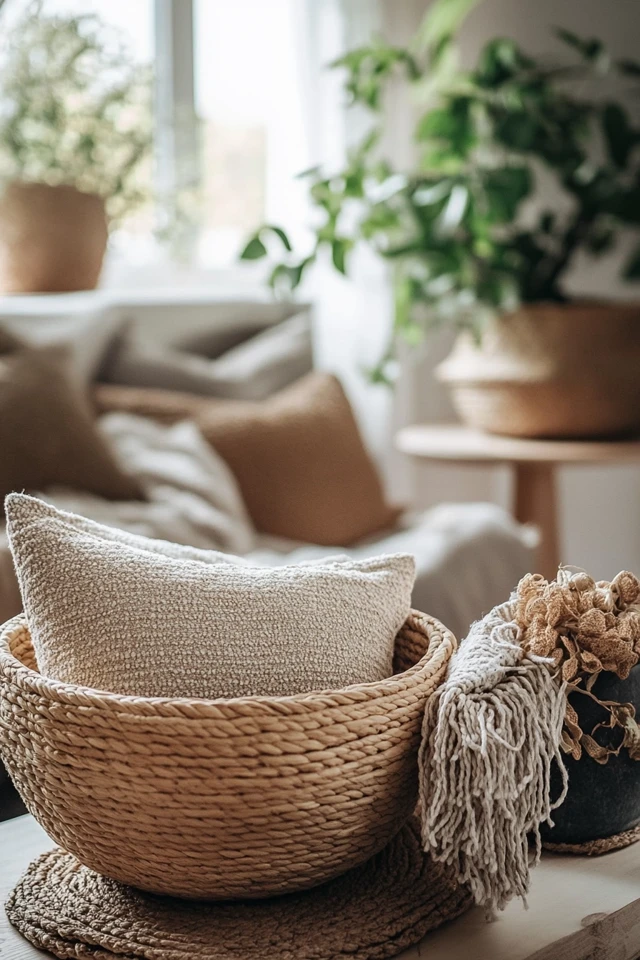
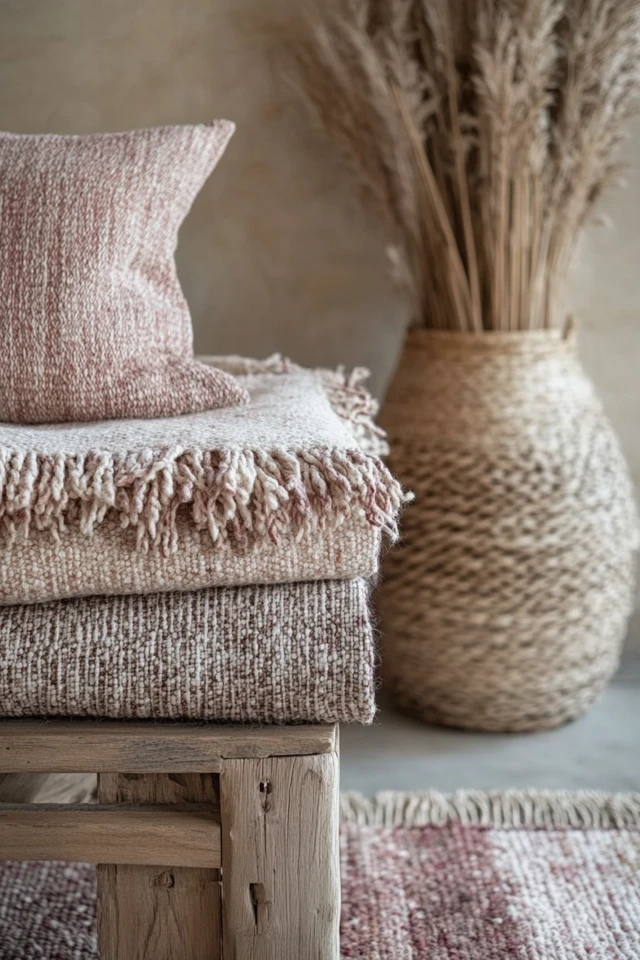
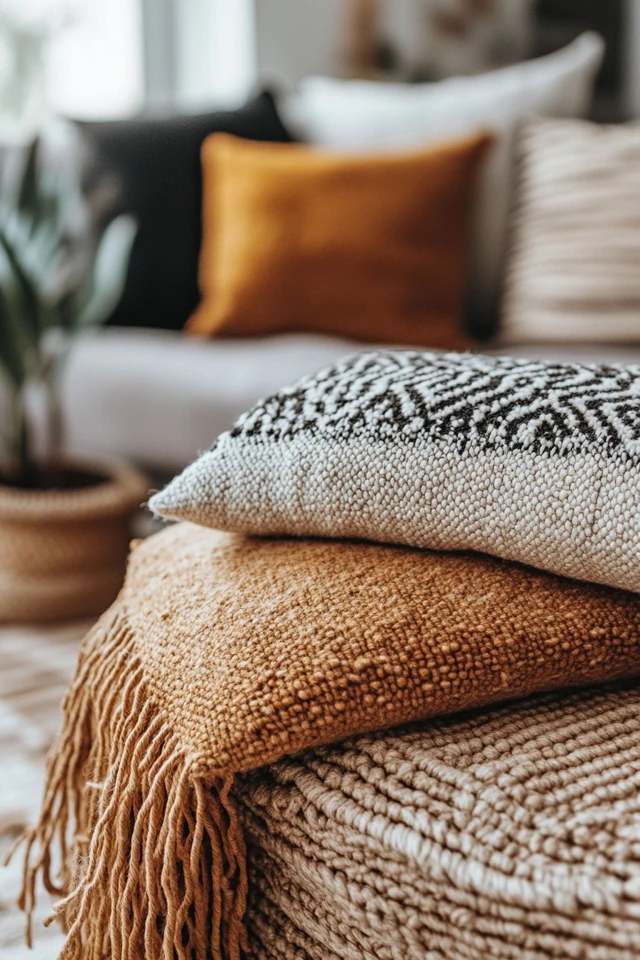
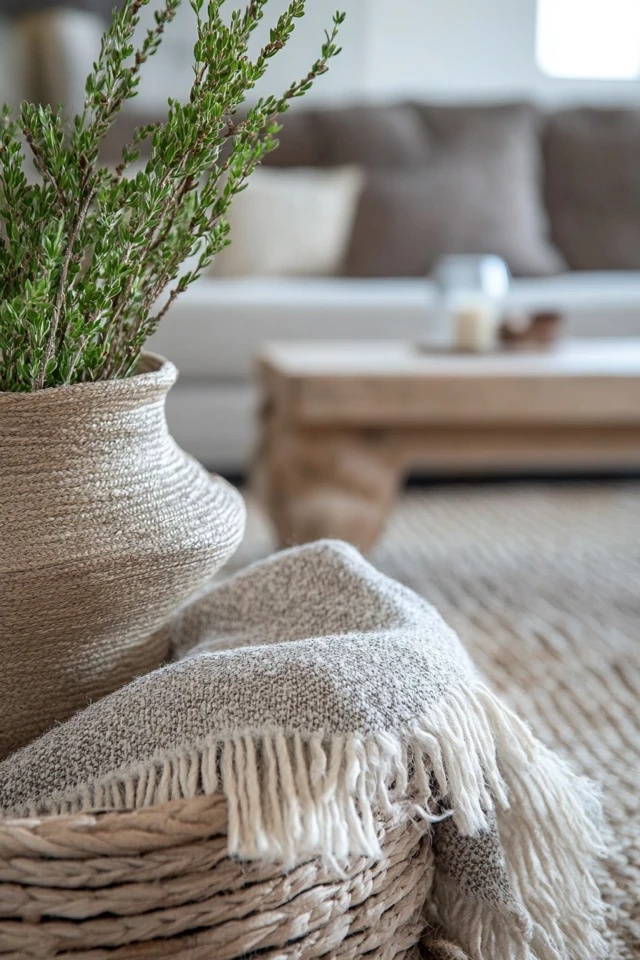
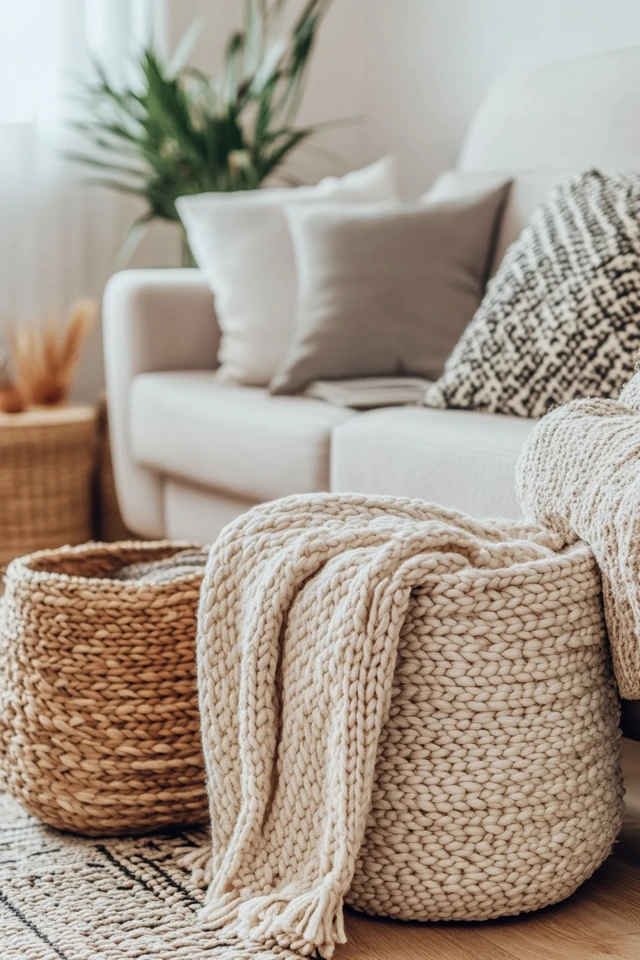
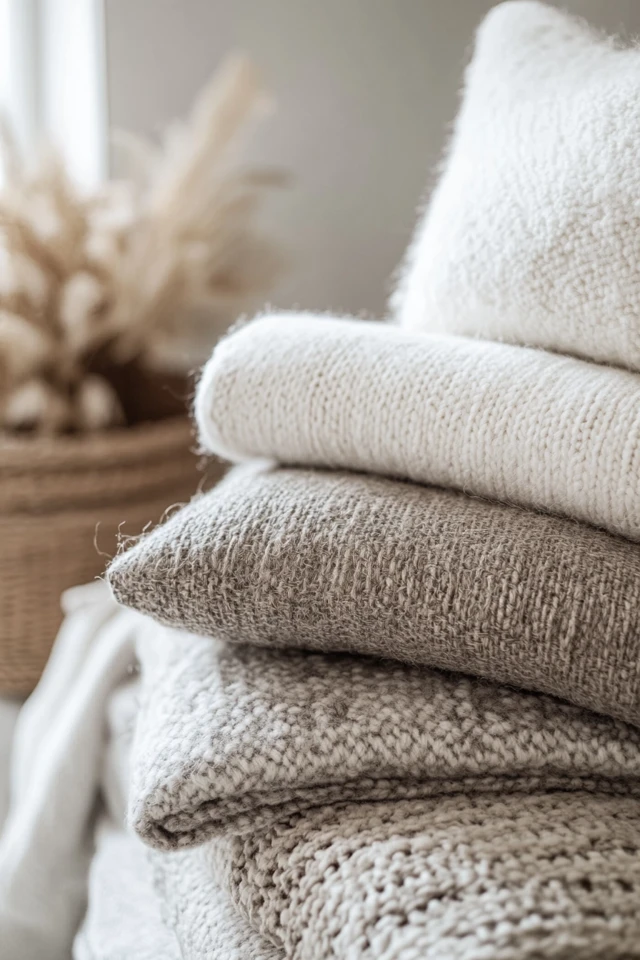
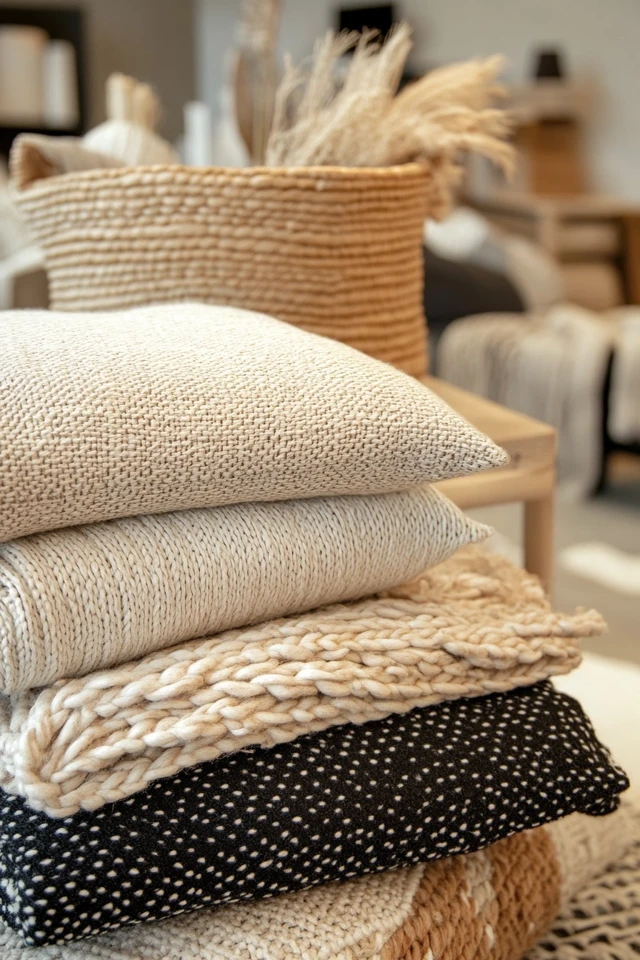
Conclusion
Decorating a Scandinavian living room with texture is all about creating a space that feels both stylish and cozy. By layering rugs, incorporating natural materials, and playing with soft textiles, you can achieve a room that’s minimalist yet inviting.
Remember, the key to Scandinavian design is balance—mixing hard and soft textures, layering neutral shades, and using natural materials to bring warmth and depth. Whether you’re revamping an existing living room or designing one from scratch, these tips will help you create a Scandinavian-inspired space that’s both functional and beautiful.
FAQs
1. How do I add texture without making my living room feel cluttered?
Stick to a neutral color palette and focus on layering textures, such as rugs, pillows, and throws, rather than adding too many decorative objects.
2. What materials work best for adding texture in Scandinavian design?
Natural materials like wool, cotton, leather, wood, jute, and stone are ideal for adding texture while maintaining a Nordic aesthetic.
3. Can I use color in a Scandinavian living room?
Yes, but keep it subtle. Use muted or pastel shades, like dusty pink, sage green, or light blue, as accents to complement the neutral base.
4. How do I make a minimalist living room feel cozy?
Layer soft textures, like cushions, rugs, and throws, and incorporate warm lighting, such as candles or lamps with fabric shades.
5. What is the best way to combine textures in a small living room?
Focus on a few key elements, like a textured rug, a woven basket, and a knit throw, to add depth without overwhelming the space.

